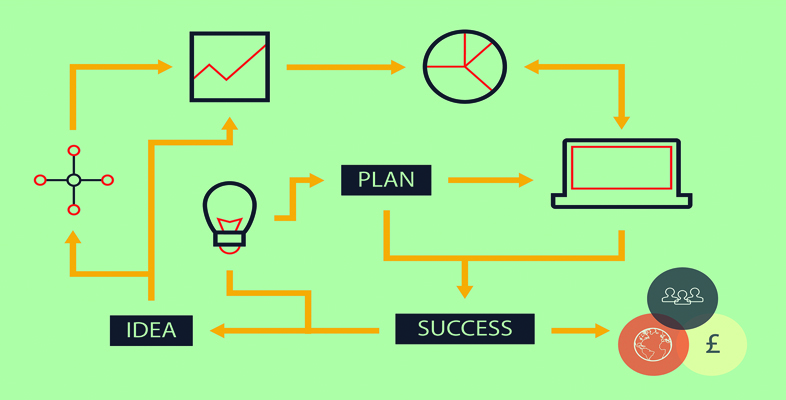3.3 Mapping your capabilities
It is often easier to recognise and name tangible resources. Intangible ones, by their very nature, can be harder to address. Sometimes you can see that the combined impact of tangible and intangible resources can produce an effect that appears more than simply the sum of its parts – they complement and augment each other in a way that creates something bigger and better. On the other hand they do not combine well and the effect produces seems less for some reason. Any long suffering fan of a sports team will recognise this, in particular when things don’t work out.
Grant (2010) suggests in order to put together your resources successfully you need to think through the following (which have been explained here with the help of an example of a restaurant):
- the processes involved, and the sequence of different actions that enable a transformation to take place (e.g. serving a restaurant meal – deciding on a recipe, deciding quantities, sourcing and buying food components, preparing each element, blending ingredients, cooking, apportioning it, presenting and serving it, taking payment for it)
- the organisational structure, how effectively it is co-ordinated, often involving simple things like co-location or apparently simple things like sharing (e.g. does the food prep take place in the restaurant kitchen? Is buying done centrally? Does one kitchen prepare for more than one restaurant?)
- motivation, whether people are able to be effective in realising the potential of the resources (e.g. are waiting staff trained? Do they understand the menu? Are they able to recommend suitable drink options? Is there a reward system – e.g. tipping or share of service charge etc.?)
- alignment, whether all these things come together to ensure a good fit with the wants and needs of customers (e.g. is the restaurant located in a good place with high footfall, the ability to recruit good kitchen and front of house staff, can foods be locally and sustainably sourced so meet demand and quality standards expected etc.?).
Activity 4 Mapping resources and capability
Using the template below, start to map out your resources and think through the capabilities of your organisation, or one that you are familiar with.
This is not a simple exercise and it might take some time, but it is worth doing and might provide some useful insights. For example, examining a corporate monster like Walmart, which on one level appears to be a grocer that has gone global, you will find one of the reasons it was able to out compete others in price and stock was through being very good at logistics to ensure it got the right product in the right place at the right time.
| Organisational capabilities |
| Process | Organisational structure | Motivation | Organisational alignment |
| Resources | ||
| Tangible | Intangible | Human |
There is no feedback for this activity.
Next you will look at how to maintain a competitive advantage over other businesses over time.
